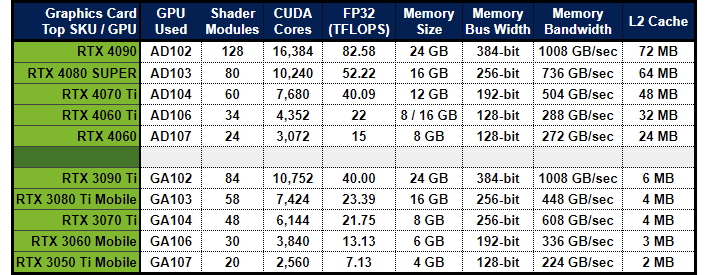NVIDIA GeForce RTX 50 Blackwell GPUs Allegedly Will Retain Ada’s Memory Interface

The modest memory bandwidth on the low-end GeForce RTX 4000 series GPUs is counteracted to some degree by the greatly-enlarged last-level cache on the chips, but the RTX 4060 and RTX 4060 Ti still suffer in higher-resolution games even though the GPU itself is more than capable of the graphics workload. Many people have hoped that NVIDIA's next-generation Blackwell graphics cards would improve matters in this specific regard, but there's no indication yet that this will happen.
The tweet above is from serial leaker kopite7kimi who has shared pre-release NVIDIA graphics details many times in the past. Like most leakers, he can be a bit hit or miss, but one of his early leaks regarding Blackwell was that it would have a massive 512-bit memory interface. Only, it turned out that he made that statement based on mistaken math, and that it seems like the top-end Blackwell parts will stick with a 384-bit memory interface.
This latest tweet, reproduced above, seems to indicate that the memory interface configuration of the consumer Blackwell GPUs will be similar to the Ada Lovelace consumer GPUs. That means we're probably looking at a 384-bit bus on the top-end part, a 256-bit bus on the high-end x80 model, and then successively narrower buses on the lower-end cards.

This may not be as dire as it seems, though. The consumer Blackwell GPUs are expected to ship with GDDR7 memory, which could clock as high as 32 Gbps. That would result in a gigantic memory bandwidth uplift; even a modest 128-bit bus could provide some 512 GB/sec of memory bandwidth. That's the same bandwidth as available on a Radeon RX 6800 XT. Of course, it's still less bandwidth than is available on one of the refreshed RTX 3060 Ti cards, which sport 608 GB/second thanks to their 19-Gbps GDDR6X memory and wide 256-bit memory bus.
If you're wondering about the "GB20x" nomenclature used in kopite7kimi's tweet, it's thought that the consumer Blackwell GPUs will be the second revision of the architecture, as the first priority for Blackwell will be to serve as an update to the Hopper GPUs that NVIDIA currently can't make enough of. Head to our previous coverage to read more about that.


